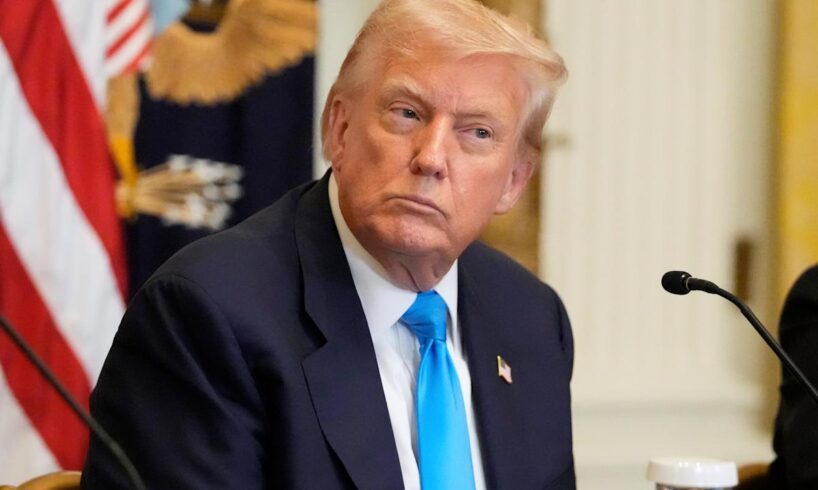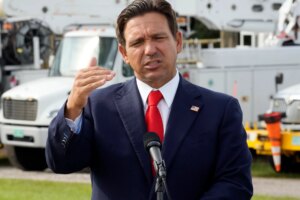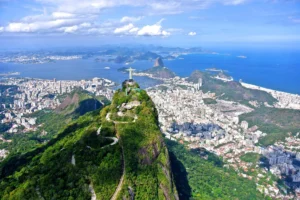
President Trump’s tariff agenda is nearing a moment of truth with an Aug. 1 deadline just a few hours away and set to establish a new baseline rate of at least 15% on most of the world.
Many final moves have come in a flurry (from a deal with South Korea to a delay with Mexico), but three key nations across three continents — Canada, India, and Brazil — have seen their talks stall and go sideways for vastly different reasons.
Importers there are now likely to face higher rates at least for the time being, leaving relationships with the world’s largest recipient of US goods (Canada), the world’s fourth-largest economy (India), and the Western Hemisphere’s second-most-populous nation (Brazil) all in flux.
Trump underlined stalemate late Thursday afternoon — at least for America’s northern neighbor — saying that his team hadn’t yet spoken to Canada today, days after Mark Carney called the talks intense.
Read more: What Trump’s tariffs mean for the economy and your wallet
The lack of progress with these countries comes ahead of a deadline that Trump and his aides are saying again and again is unmovable (Trump recently called it a “big day for America”). Aides also say that negotiations will continue past Aug. 1.
The fate of the US-China trading relationship is another uncertainty, but negotiators appear to be close to at least another 90-day pause on tariff hikes. Treasury Secretary Scott Bessent told CNBC Thursday he would speak to the president Thursday about an extension, with additional technical details still to be worked out but “the makings of a deal” in place.
Read more: The latest news and updates on Trump’s tariffs
The administration also faces a legal hurdle as its Friday deadline approaches. A federal appeals court will hear arguments Thursday on the legality of the authority Trump is claiming to impose these tariffs.
Trump reiterated the lack of progress with Canada Thursday morning in a Truth Social post where he brought the Middle East into the mix.
“Wow! Canada has just announced that it is backing statehood for Palestine,” he wrote. “That will make it very hard for us to make a Trade Deal with them.”
The post came in response to the news that Canada will join France and the United Kingdom in this largely symbolic move that Trump previously brushed off.
Trump later said that Canada’s move wasn’t necessarily a dealbreaker but it’s the latest Trump missive and continues a string of critical comments about America’s northern neighbor stretching back to the beginning of Trump’s second administration.
Trump is promising to move forward with 35% tariffs there, which would be a major setback in relations between the two countries, but one with more limited economic effects for now.
That’s because about half of goods that travel between the two countries are able to trade largely duty-free, thanks to the United States-Mexico-Canada Agreement (USMCA).
Canadian Prime Minister Mark Carney and US President Donald Trump during a Group of Seven (G7) Summit in Canada in June. (LUDOVIC MARIN/POOL/AFP via Getty Images) · LUDOVIC MARIN via Getty Images
Mexico is also covered by the USMCA — and had been facing 30% duties of its own — but President Trump announced Thursday morning that a call with Mexican President Claudia Sheinbaum had been “very successful” and that he would grant a delay and stick with the current 25% duties on the nation for 90 days as talks continue and “we are getting to know and understand each other.”
It was just the latest example of Mexico escaping much rhetorical fire from Trump, who has again and again chosen to clash with Canada.
The USMCA is up up for a formal review next summer, giving negotiators in Canada more time to get talks back on track.
India was the focus of another overnight social media post, with Trump lumping India in with Russia as “dead economies.”
It’s a 180-degree turn of sorts from Trump after previously warm relations, including a warm reception for Indian Prime Minister Narendra Modi at the White House earlier this year.
The tensions appear to stem from India’s hard negotiating stance. Trump reiterated Friday morning that India’s tariffs are too high in the latest sign that a deal may be a ways off in closely watched talks that have implications for Apple (AAPL) and its large iPhone manufacturing operations there.
Indian officials were in Washington for talks in recent weeks and left without a deal but also sent signals that talks are making progress and that they feel an agreement could be struck in the fall.
President Donald Trump met with Indian Prime Minister Narendra Modi at the White House on February 13. (Indian Press Information Bureau via Getty Images) · Anadolu via Getty Images
The back-and-forth also comes as many analysts say the heated rhetoric as of late is a way to get concessions.
“India is the latest example where Trump’s escalation is a sign that a deal is imminent,” wrote Raymond James analysts in a note this week, calling this a “final opportunity to gain concessions before an agreement is made.”
Trump said Wednesday that talks with India continue and that he still considers Modi a friend, but for the moment he is promising 25% tariffs on the world’s fourth-largest economy and main regional economic counterweight to China.
Read more: 5 ways to tariff-proof your finances
Trump has also pledged unspecified additional penalties on India because of the nation’s consumption of Russian oil.
Meanwhile, any off-ramp with Brazil is much less certain. Trump has promised 50% tariffs there over what he describes as a witch hunt of Jair Bolsonaro.
The former Brazilian president is facing a trial for his role in trying to overturn the results of his country’s 2022 election.
President Donald Trump met with then-Brazilian President Jair Bolsonaro during a dinner at Mar-a-Lago in 2020. (JIM WATSON/AFP via Getty Images) · JIM WATSON via Getty Images
Trump moved forward with his 50% plans Wednesday with an executive order that claimed that “politically persecuting a former President of Brazil” was a key factor leading him to declare a national economic emergency and impose additional 40% tariffs — on top of existing 10% duties — but with some notable exceptions for things like orange juice and aircraft parts.
Brazil has said that Trump’s demand to intervene in the trial of Bolsonaro is a nonstarter and it’s unclear what else they can offer — especially given that the US has a rare trade surplus with Brazil.
Meanwhile, Trump’s use of emergency powers to target Brazil has come under withering criticism, with Melinda St. Louis, a trade director at the watchdog group Public Citizen, saying, “It’s hard to fathom a flimsier justification for a US national emergency.”
Reuters is reporting that Brazil expects 35.9% of its US exports — by value — to be hit by a steeper 50% tariff.
All told, markets have largely shrugged off Trump’s latest tariff deadline, with investors apparently more focused on Big Tech earnings.
But even with Trump promising to be “done” with trade after this week, the many loose ends between America and its third, 10th, and 11th largest trading partners, according to the Census Bureau, aren’t going away.
That suggests efforts to find areas of agreement are likely to continue unabated.
This story has been updated.
Ben Werschkul is a Washington correspondent for Yahoo Finance.
Click here for political news related to business and money policies that will shape tomorrow’s stock prices
Read the latest financial and business news from Yahoo Finance





